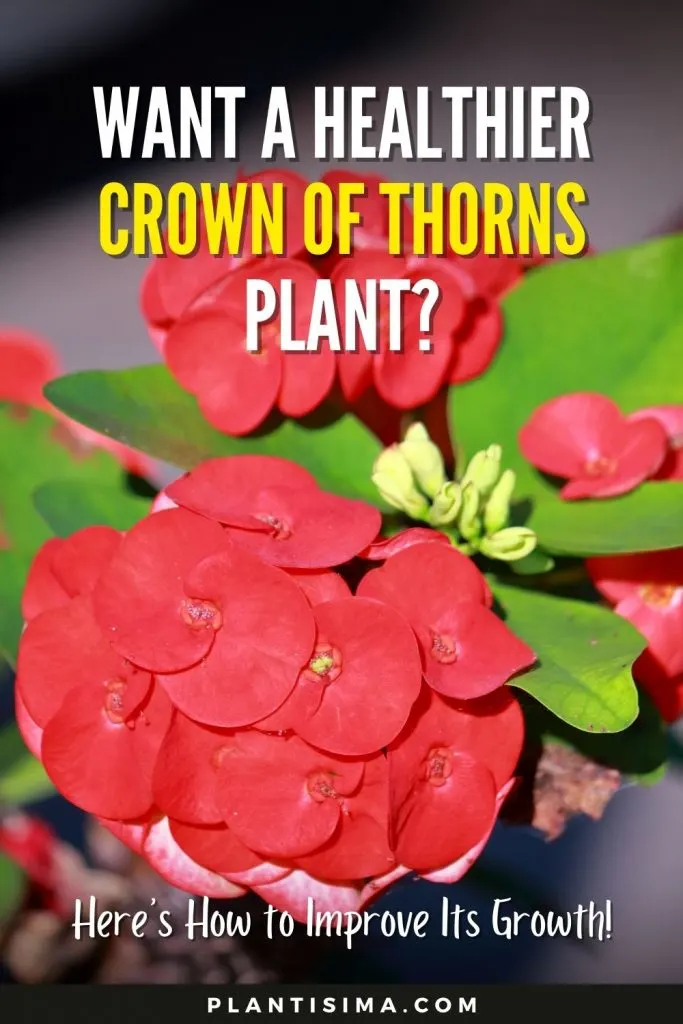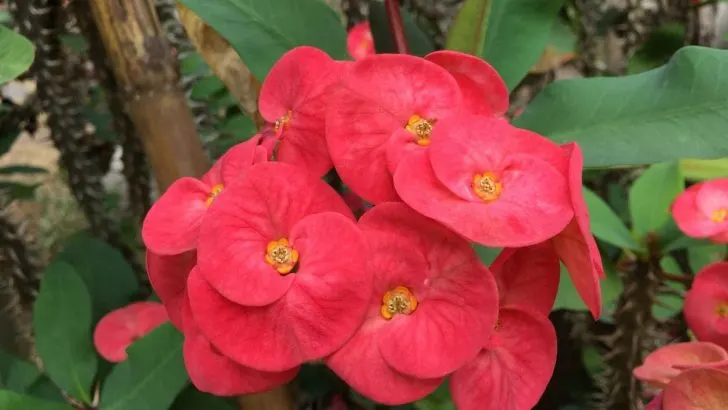Crown of thorns plant care isn’t something you should be worried about when getting this plant. The planting process of this plant, just like its care guide is very simple. Then why do some people suggest that growing a crown is complicated?
There is a couple of things you’ll need to pay attention to. In case you missed them, your plant might get droopy or near death soon. To avoid such problems, we will provide you with the best care guide for this plant.
You will learn everything about its ultimate care guide in detail. Once you’re done, you will be able to positively say you’re a pro for the care guide of a crown of thorns plants.
If you’re ready, let’s start learning about the care guide for the crown of thorns plants.
About Crown Of Thorns Plant
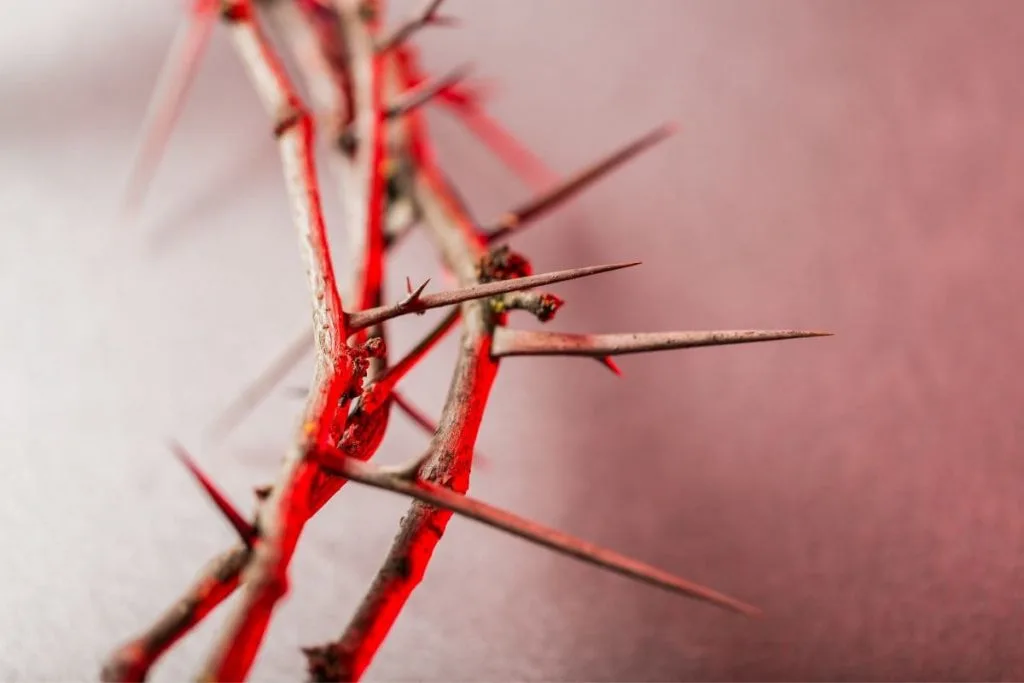
Some people believe this plant is a plant with red stems but that isn’t correct. Stems appear red sometimes when you expose them to a tall indoors sun exposure or bright light.
The plant reacts pretty well in such light conditions and it reflects in such a way that people think the stems are red.
Before we dig into tip cuttings tutorial, full sun conditions, and general care of these indoor plants, let’s check their features. Below we bring you basic botanic information about the crown of thorns plants.
- Native habitat: Red sea, Indo-Pacific region
- Botanical name: Euphorbia milii
- Common name: Thorns euphorbia shrubs, Christ plant due to the fact that the thorny crown worn by Jesus became a holy plant
- Family: Spurges
- Flower shape and color: red flowers, like the number eight, produce flowers year round
- Leaf shape: simple, alternate, obovate to oblong, bright green leaves grow medium-fast
- Stems: thick stems, green, each holding between 4-5 leaves
- Use: both container plants and pot plants outdoors and indoors
- Toxicity: corrosive to eyes and causes skin irritation from a milky sap
- Where to plant: direct sunlight, in the prepared cactus soil mix, place on a sunny window
Crown Of Thorns Plant Care: Simple Tricks For Thorns Plants
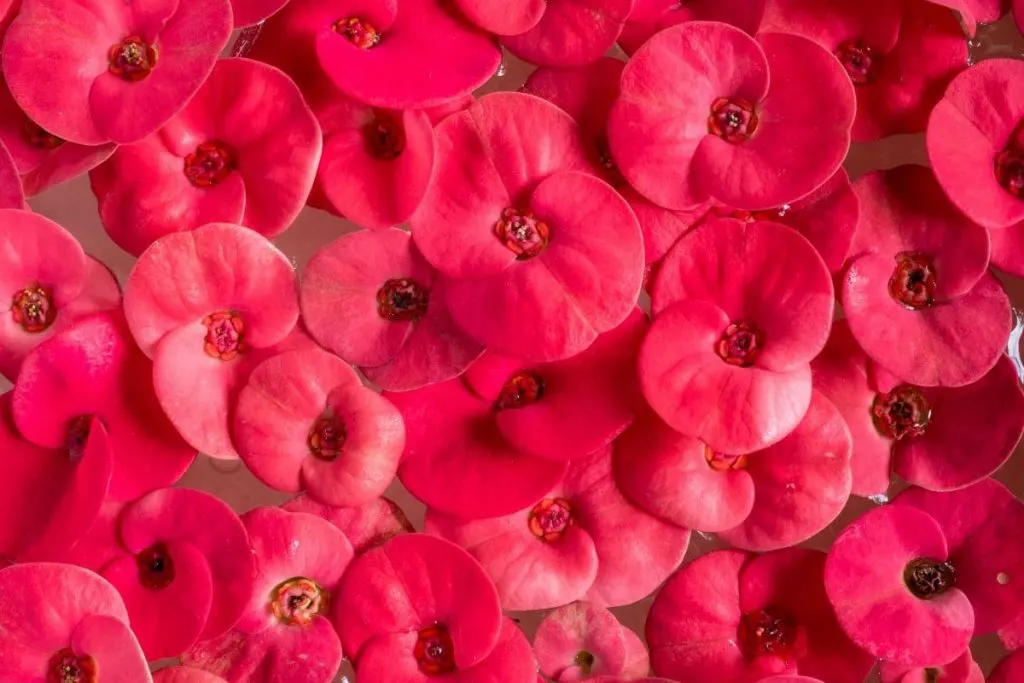
Thorns growing indoors might become a challenging job for you. But only if you miss out on a thing or two in their care guide. If you carefully read everything we suggest to you, we’re sure, you won’t have any problems.
Thorns indoors are one of the best houseplants when located in their wanted position. This flowering succulent is one of the xeriscape-type plants and one of the most popular colorful houseplants. The potted crown will grow great, unlike the other xeriscape-type plants.
With a perfect care guide, you won’t face reduced flower production, root ball, or any similar issues. Thorns outdoors might need a bit more attention, especially in the areas with 4 seasons.
If you get soil aeration, soil mixture, and direct bright light conditions right, you won’t lack any bloom production.
To make sure how to take care of delicate blossoms of the crown of thorns plants, let’s learn how to grow crowns and take care of an indoor crown.
Where To Locate Potted Plants Indoors?
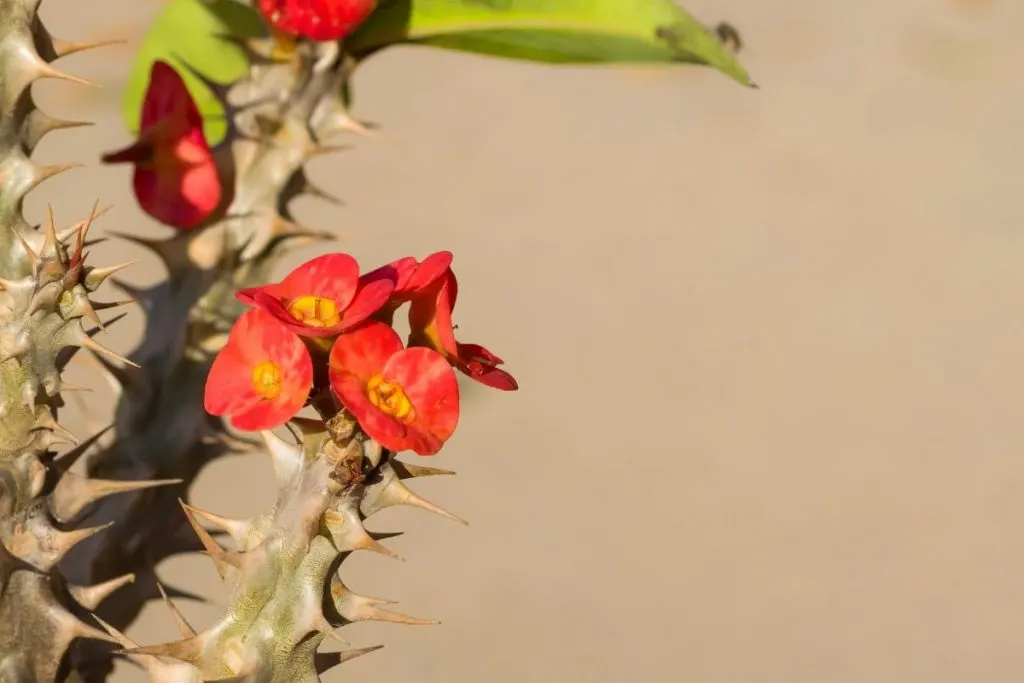
Thorns houseplant care begins with their perfect location indoors or outdoors. However, it is more difficult to find a perfect location for them indoors.
These flowering plants need bright indirect light and full sun in the morning, and sometimes, you won’t find such a location indoors.
Most people don’t want to miss out on such a great houseplant and they’ll do whatever it takes to bring it inside.
The perfect location for this plant is on a sunny window indoors. Thorns naturally grow in warmer areas and it prefers the sun, warm water, and warmer temperatures as well.
If you have such a window, search no more. That is exactly the location your crown of thorns plant needs (all day long or at least three to four hours).
Outdoors, just make sure it has enough light as well. When you move the plant around, make sure you wear gloves (wear thick gloves).
Plants can cause skin irritation even in gentle contact. Plant crown creates a perfect sunny rock garden but when bringing indoors these house plants, you’ll have to keep an eye on your pets. When you take care of the location, plant diseases (all year round) will be less common too.
What Are The Light Needs Of Crown Of Thorns Plant?
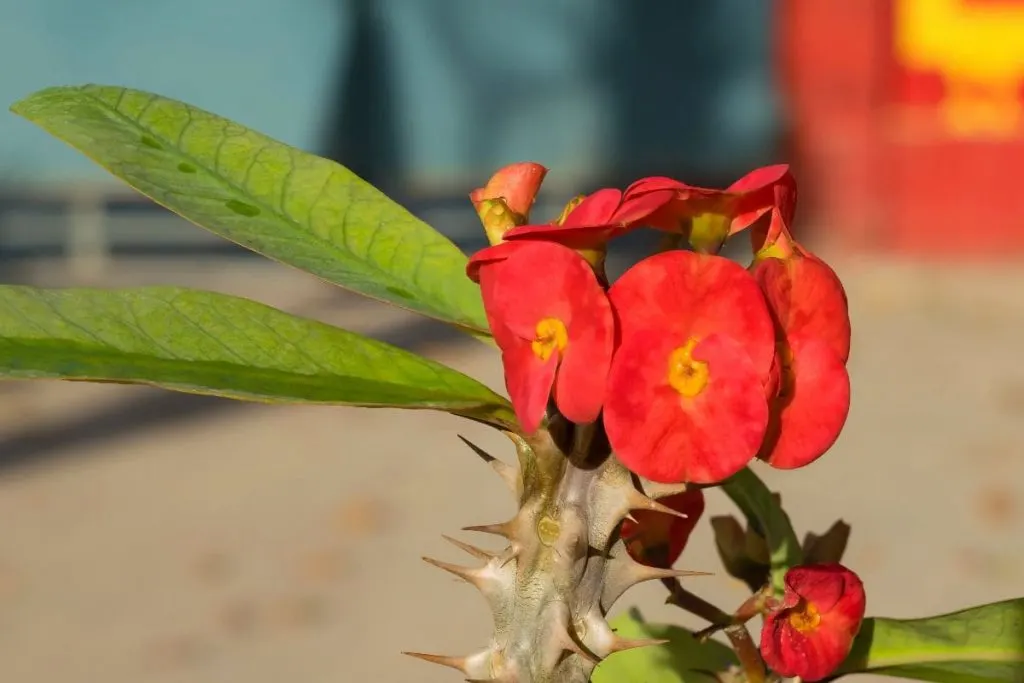
The easiest would be to say, place your crown of thorns plant in position with the sun and thus finish this part.
But unfortunately, it’s not quite that simple. The brightness and brightness needs of this flash will depend on several factors:
- whether you grow it outside or inside
- whether it is a young plant or a maturing plant
- whether you live in a region with warmer temperatures or cooler temperatures
- has the plant overwintered, etc.
When you think about these factors and take them into account, then we can talk about the light needs of this plant. All plants growing outside, in warm regions, will need mild light.
Even mild indirect light with partial shade is not bad. Full shade is never good for this plant as it will produce fewer flowers.
The sun is necessary for a lot of flowering on this plant. In regions with cooler temperatures and wind, this plant will greatly appreciate direct sunlight.
It would be good if it grew at least 3-4 hours a day in such conditions. With so much sun, healthy flowering is guaranteed with this plant.
If the plant has just overwintered, then it is also good to spend a lot of time in the sun, at least for the first two weeks.
The young plant you have just planted will need a lot of light and sun, especially for the first 3 weeks. In partial shade or full shade, it will not give any indication of progress.
How Often Should I Water My Crown Of Thorns Plant?
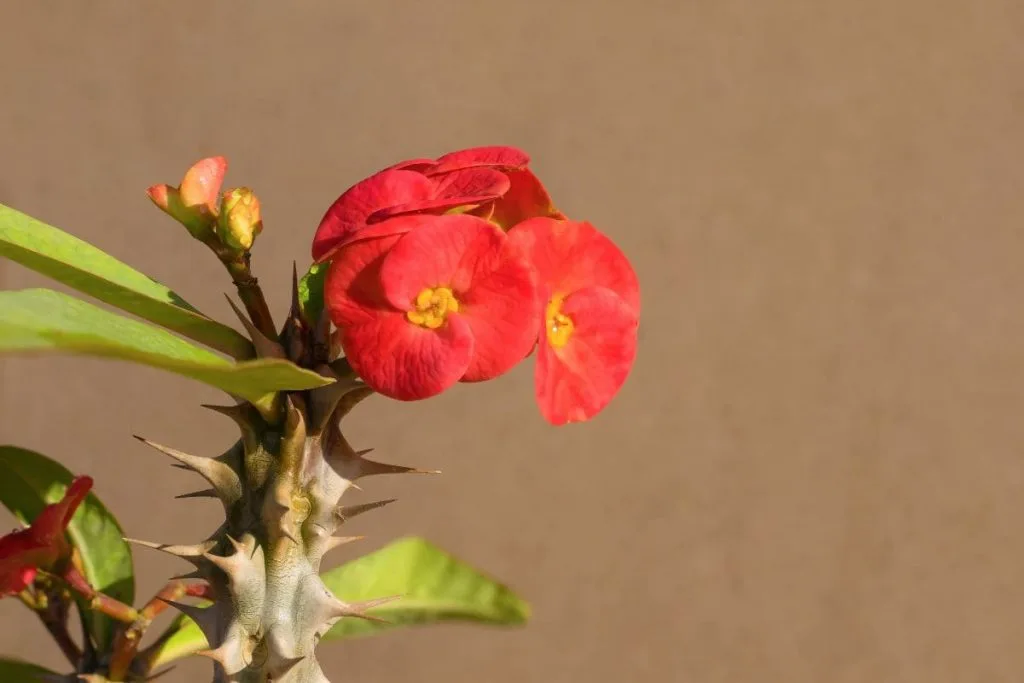
This plant is very sensitive to water. too much water in a few days can cause root rot. It will only take one wrong watering for you to have a root rot problem, but more on that below.
The plant tolerates salt spray as well as salt in general, so you don’t have to worry about the choice of water much.
You can use rainwater, tap water, or distilled water, the choice is yours. Water your crown of thorns plant every 8-9 days.
You don’t need to pour more than 2 inches of water from the flower pot you use. Of course, every time before watering, check whether the soil is wet.
Wet soil causes many problems, not just root rot. If you have multiple plants planted in your container, then you can go up to 3 inches of water because each root will absorb the water separately. In this case, the excess water will not be retained in the pot as much.
What Soil To Use For The Crown Of Thorns Plant?
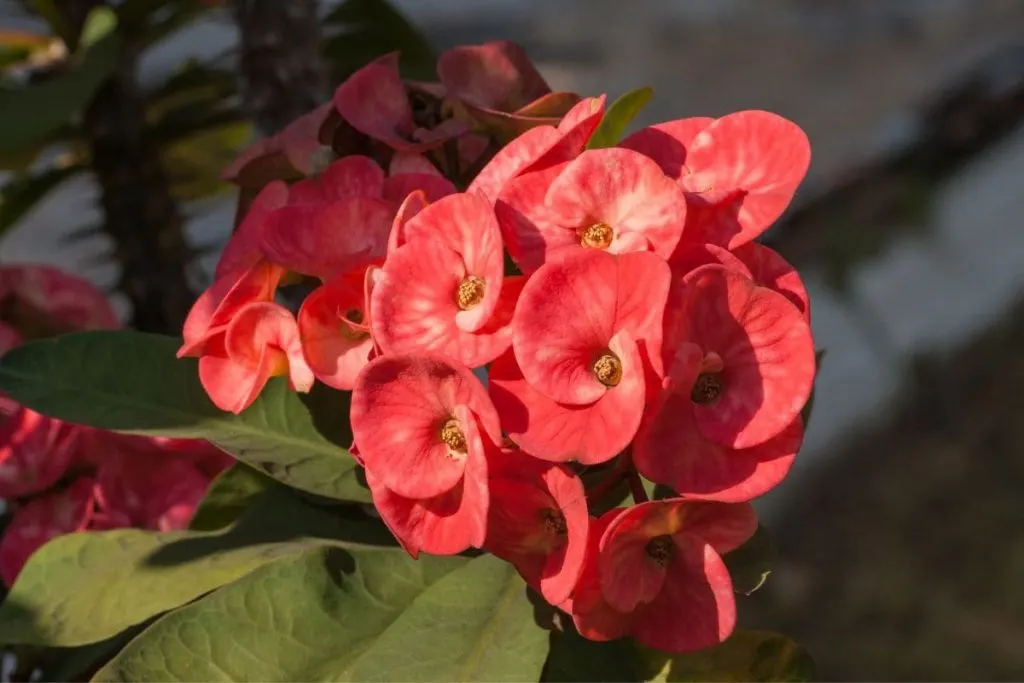
As we already suggested above, it would be smart to use a prepared cactus soil mix for this plant.
You’ll find sandy soil, peat moss, and perlite in that mix. Sometimes you’ll find pumice or grit as well in those mixes.
You can plant this plant in only sandy soil, but the texture and “softness” of the soil like perlite or pumice soil is exactly what the roots of this plant need. This is precisely why experienced winemakers recommend this mix.
As you can assume, the plant does not like acidic soils. A little moisture will be fine, as long as it doesn’t exceed 4.5 on the soil pH scale. This plant doesn’t like organic soils as well.
What Fertilizer To Use For Crown Of Thorns Plants?
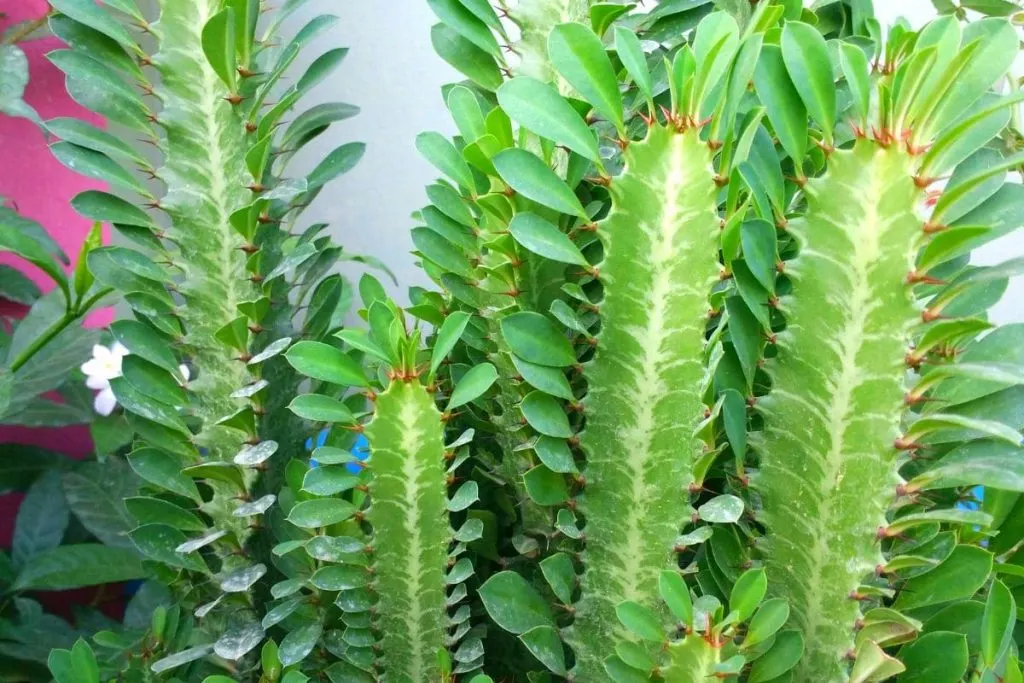
The best choice of fertilizer for this plant is a liquid fertilizer. You should use this type of a fertilize every few weeks in the springtime, summer, and early fall.
You should never fertilize this plant before its dormant time. Their dormant time begins in the late fall. After the 15th of September, it’s best if you forget about the fertilizer until the beginning of March.
Unless you don’t have a liquid fertilizer we don’t advise using other fertilizers. This plant is very picky when it comes to fertilizer. You can use granular fertilizer on this plant just once per year.
What Are Average Room Temperatures For Crown Of Thorns Plants?
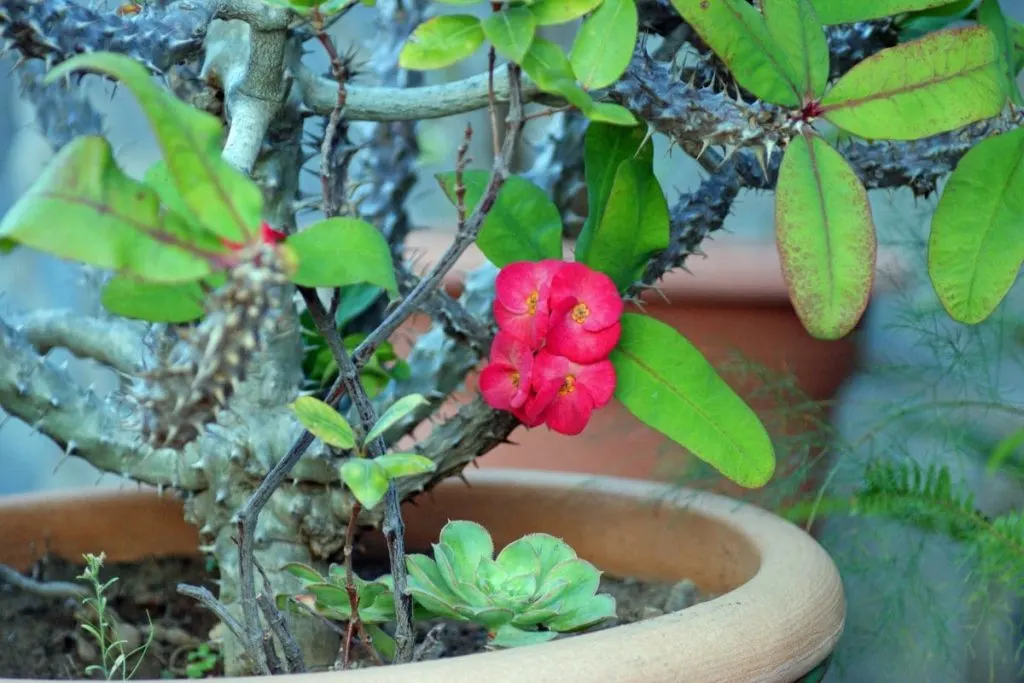
This plant grows best in conditions that provide between 65 and 75 degrees Fahrenheit. Cold temperatures do not favor this plant at all.
This plant prefers warmer temperatures because it originates from warm regions. It benefits the most from temperate continental climates, while it grows a little worse in tropical climates.
In the room where you keep and grow this plant, it would be good to let in the fresh air every day. Ventilate the room regularly. In such conditions, the plant will grow excellently.
Should I Cut Back My Crown Of Thorns?
It will branch naturally as it suits it and even a lot of pruning won’t do it. If you see yellowed tips, tip cuttings are necessary. Otherwise, it will spread, and then you will have problems.
How To Propagate Crown Of Thorns?
After that, transplant them into a pot with prepared soil and fertilizer. Place that pot in a place with plenty of sun. After a week in such an environment, you will again see the progress of the propagated plant.
How To Take Care Of Crown Of Thorns In The Winter?
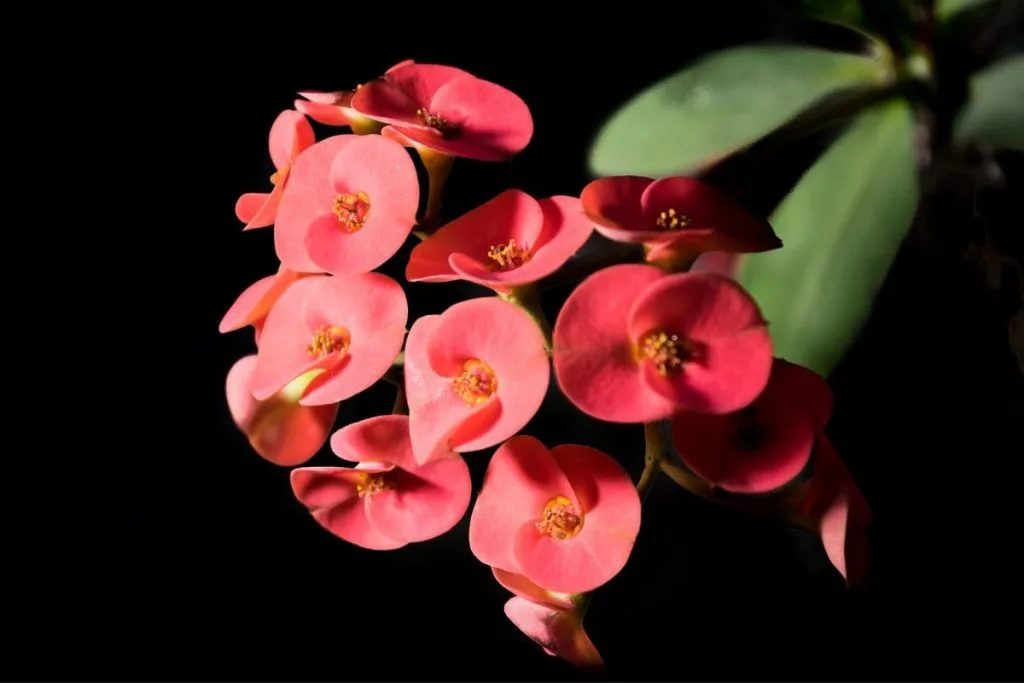
In winter, it is best to protect the plant with some nylon or plastic for plants if it is outside during the winter. If you grow it indoors, you don’t have to worry.
Inside, it will be a little harder to get used to the climate and such changes, but eventually, they will get used to that as well.
They should not change the temperature inside much in the winter because it could be unfavorable for the plant.
As we said above, fertilization is not necessary for winter. You should also water this plant less often in the winter months.
Pests And Diseases Of A Crown Plant
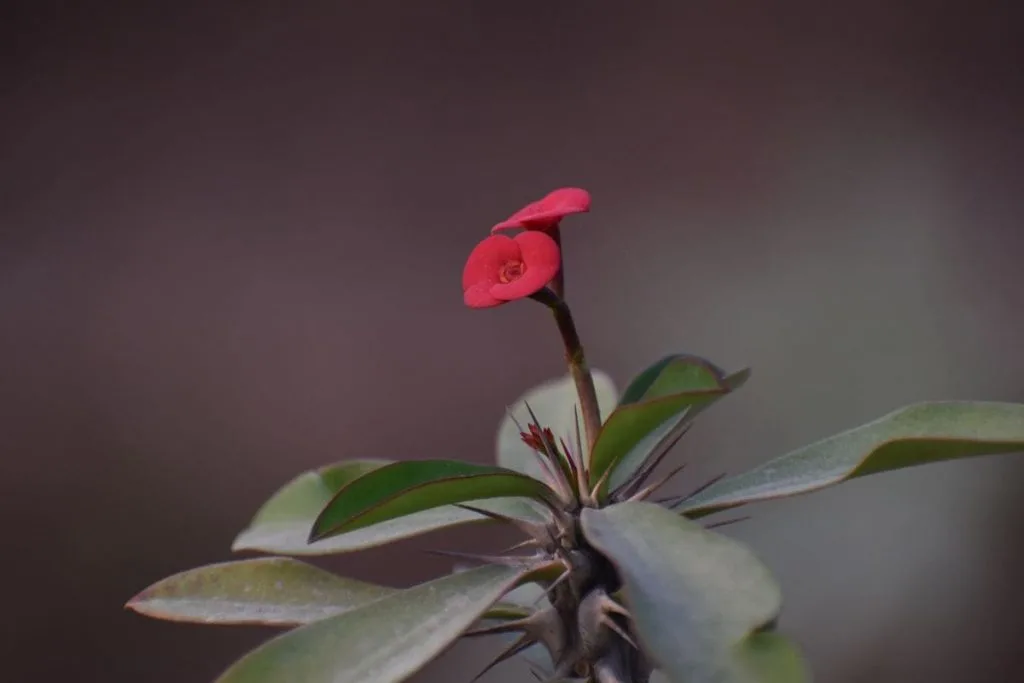
No matter where you keep your plant, indoors or outdoors, diseases plague the crown of thorns rarely. A sunny rock garden makes the habitat for this plant a perfect environment for everything but diseases and pests.
But sometimes, lack of attention can lead to issues such as root rot, cyclical leaf drop, fungal disease, and reduced flower production. The plant reacts sensitively to a lack of nutrients. That can cause issues too.
The root ball can be damaged when translating, stem growth can be reduced at a temperature that doesn’t fit this plant, and so on.
Below we bring you, rare but serious issues that might occur on your plant. Find out more about them and learn how to prevent and stop them.
Root Rot
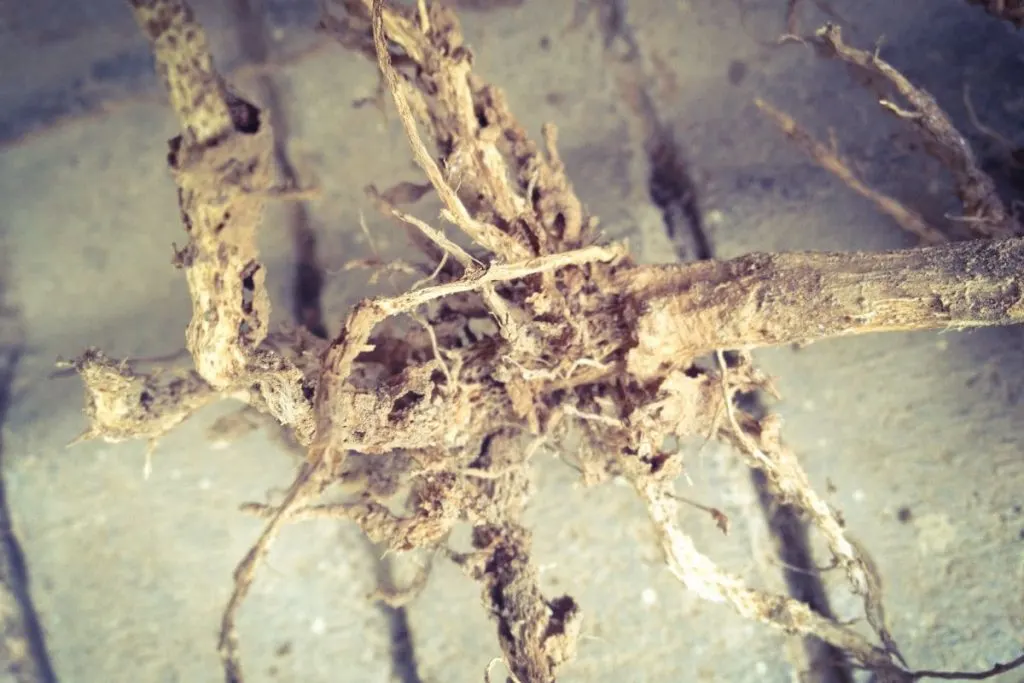
Root rot is not caused by overwatering the only reason for it. Sometimes it is also caused by fungi found in the soil.
You can’t understand that just by looking at the plant of course. You will need a closer inspection to figure this out.
If you suspect fungi, treat the plant with suitable agents for indoor plants. Follow the directions on the anti-fungal package and hope for the best. Plants that are resistant to drought are less prone to this problem.
This includes succulents, for example, but plants like this one won’t get this problem as often. They are usually small plants and are watered little, but one watering can be fatal and crucial. Therefore, pay attention to the water and the fungi that lead to this problem.
To avoid these problems, try these methods:
- Use well-draining soil: If the soil is not well-drained, water can accumulate around the plant’s roots and lead to rot.
- Choose the right place for the plant: Plants need enough light and ventilation to grow healthy and strong, so it is important to choose the right place for the plant.
- Prevent injury to the roots: If the roots of the plant are injured, they can rot faster.
Cyclical Leaf Drop
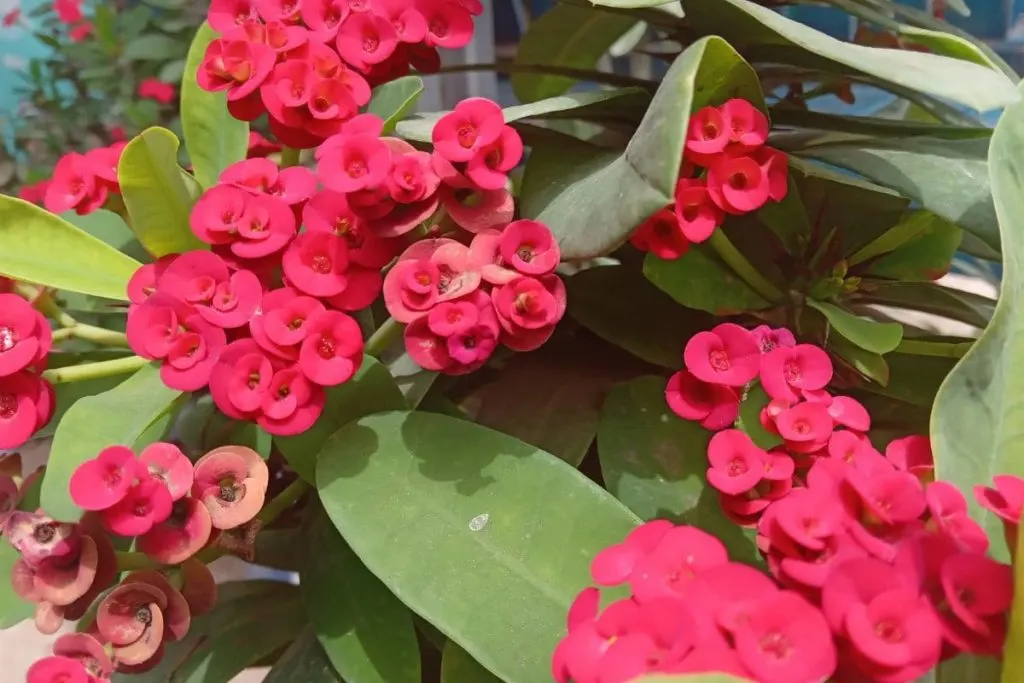
Leaf drop comes as a result of yellow leaves. After the leaves turn partially yellow, then they turn completely yellow and then eventually fall off. Some plants can also reach black leaves, i.e. the black leaf stage before the leaf falls off.
This problem will appear when the plant has mature stems and mature leaves. This problem rarely attacks a young plant. For this problem to appear, this plant will need to be in unfavorable growing conditions for a long time.
Excess water, temperature change, high humidity, etc. All led to this terrible problem. Of course, not all leaves will turn yellow immediately.
One leaf will turn yellow, then the other. If you do not see the cause and do not change the growing conditions, in the end, the whole plant will be bare.
To prevent and stop this problem, try these methods:
- It is better to water the plants less often, but more deeply, to allow the soil to dry well between waterings.
- Provide enough light: If the plant does not have enough light, the leaves may start to fall out.
- Maintain the right temperature: Too high or too low a temperature can cause the leaves to drop.
- Keep it clean: Regularly clean the leaves of the plant with a dry cloth or soft brush to remove dirt and moisture that may accumulate on the leaves.
Fungal Disease
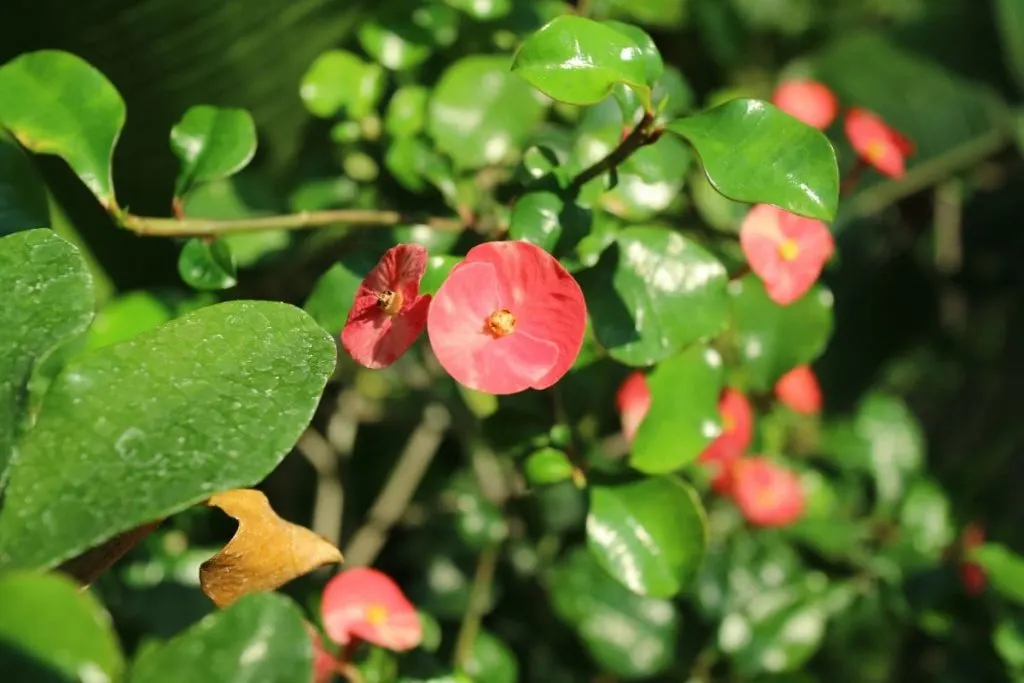
Fungal diseases appear as a result of frequent temperature changes and excess water. Fungal diseases are treated with pesticides and by changing the conditions in which the plant is. To prevent or stop the fungal disease of your crown of thorns plant, try these methods as well:
- Water your plants the right way: Too much water or watering too often can lead to the development of fungal diseases. It is better to water the plants less often, but more deeply, to allow the soil to dry well between waterings.
- Keep it clean: Regularly clean the leaves of the plant with a dry cloth or soft brush to remove dirt and moisture that may accumulate on the leaves.
- Use protection against fungi: There are some products that can be used to prevent the development of fungal diseases, such as fungicides or insecticides.
- Be careful where you grow plants: Fungi are easily spread through air and water, so it is important to grow plants in a sufficiently bright and well-ventilated place.
Reduced Flower Production
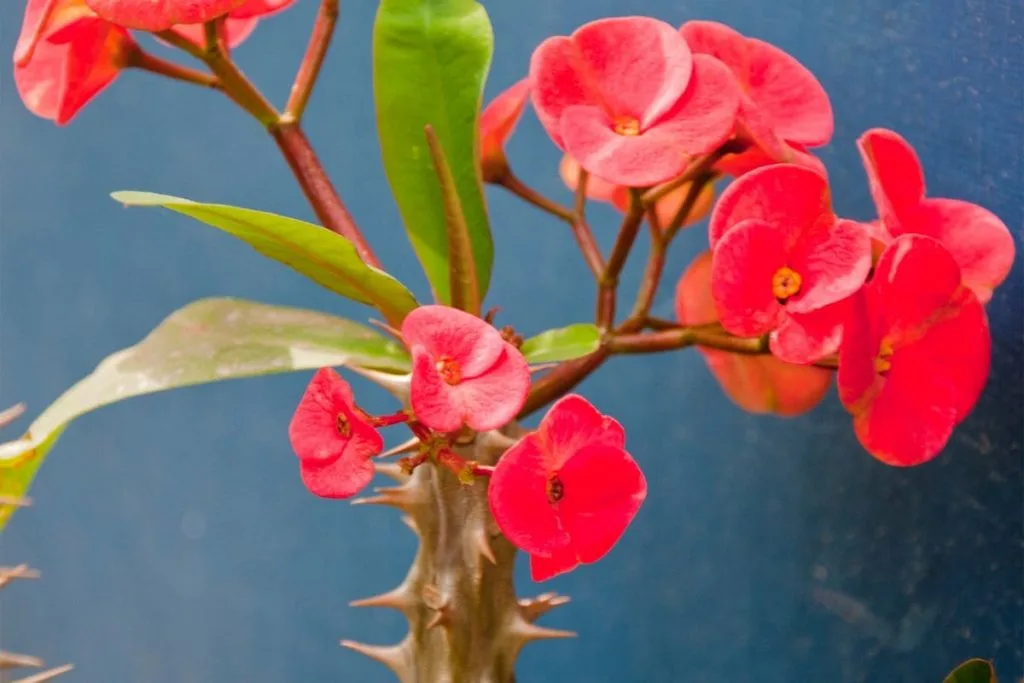
There are several reasons why plants may have reduced flowers during flowering. Some of the possible reasons are:
- Nutrient deficiency: Plants may have fewer flowers if certain nutrients in the soil, such as nitrogen or phosphorus, are lacking.
- Too much or too little water: Too much or too little water can also affect the number of flowers in plants.
- Poor light: If the plant does not have enough light, it may have fewer flowers.
- Stress: Stress, such as drought or lack of food, can also affect the number of flowers in plants.
- Defective genetics: Sometimes, plants may have fewer flowers due to faulty genetics or some other internal disease.
If you want to help the plant have more flowers during flowering, there are a few things you can do:
- Provide enough nutrients: If the plant is fed enough nutrients, it can help produce more flowers.
- Maintain proper moisture levels: Plants need adequate amounts of water to grow and bloom, so it’s important to water them regularly.
- Provide enough light: If the plant has enough light, it can help produce more flowers.
- Reduce stress: If a plant is under stress, such as drought or lack of food, it can affect its ability to flower. Try to reduce stress by watering the plant regularly and feeding it with nutrients.
Yellow Leaf Tips
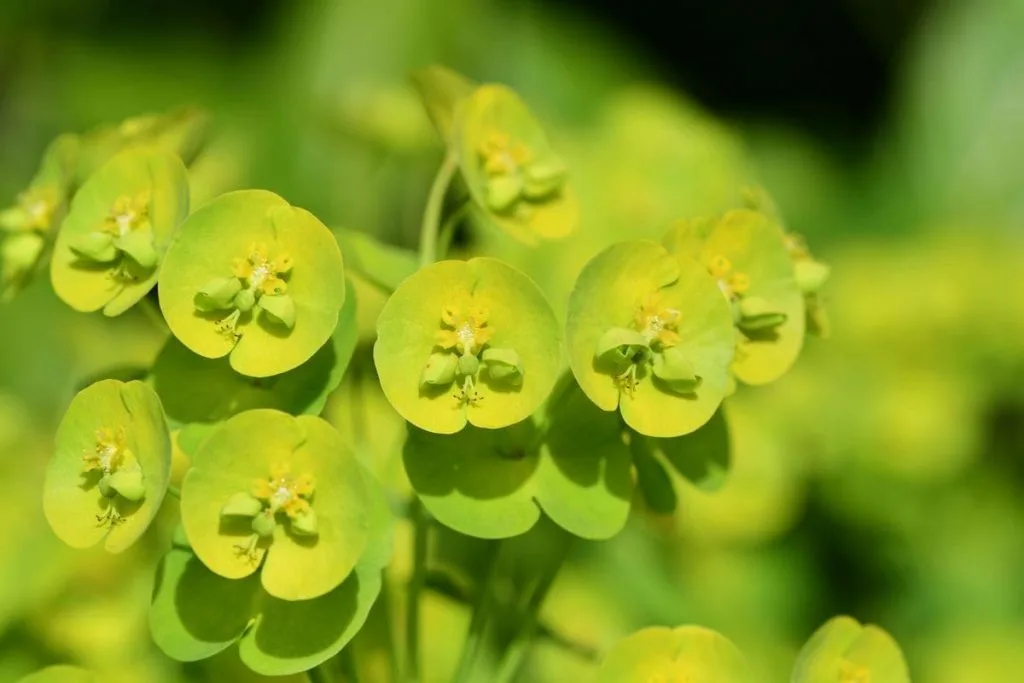
The most common causes of yellow leaves are too much or too little water, lack of fertilizer, too little heat, and insufficient light.
When you do the opposite of what is harming them, things will immediately improve and your plant will no longer turn yellow.
Feel free to tear off the yellowed leaves with your hand so that it does not spread to the entire plant.
Wrapping Up
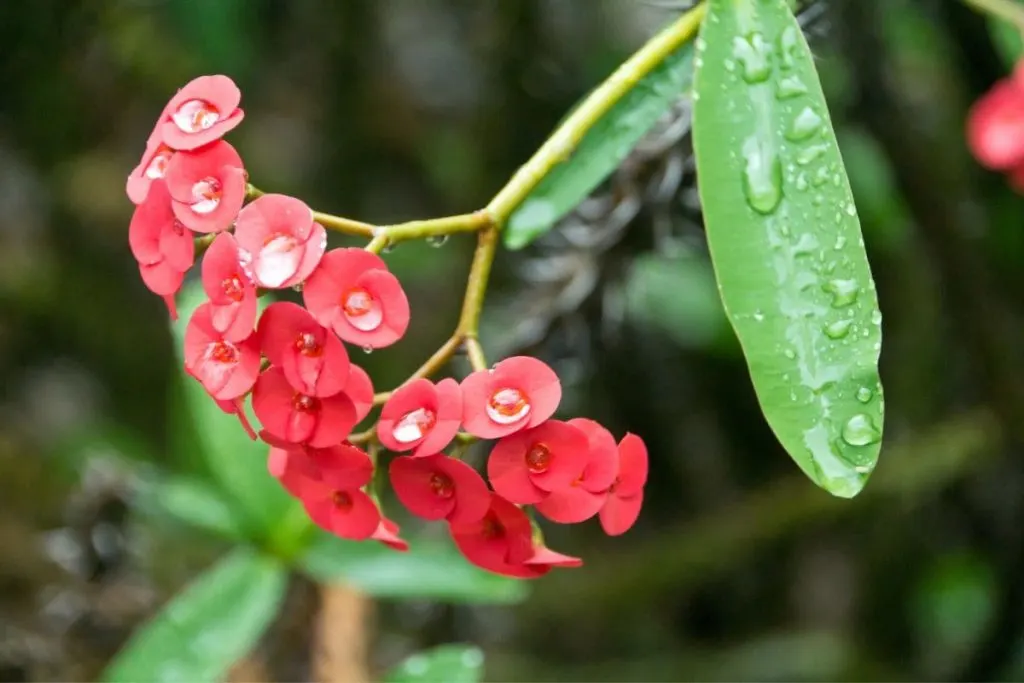
How did you like our crown of thorns plant care article? We’re confident to say that you learned a lot from this article. Starring from their botanical features all the way to the plant’s care guide.
New stem growth can soon be done with our help. We hope you’ll be able to recognize the plant’s issues on time as well, and even more important, that you won’t get any plant issues you’ll need to solve.
If you loved the appearance of this plant you’ll enjoy aglaonema varieties such as aglaonema sparkling Sarah too. They are very similar. Another plant that deserves its throne is the purple queen plant. You will fall in love with this one.
That would be all for today, see you tomorrow with more articles.
